
On the west side of the ‘Inca Trail’ (this section of the main RockWalk path), opposite the Corduroy Trail, is an open area with various samples scattered around the site. “This is our Gem Garden that was renamed as “The Queen’s Courtyard” when RockWalk was provided funding to honour Queen Elizabeth II during the year of her “PLATINUM JUBILEE”. The exhibits range from the Provincial gemstone…Amethyst…to Diamonds to some of the most valuable minerals of the 21 st century… the Platinum Group Metals.
GV#1
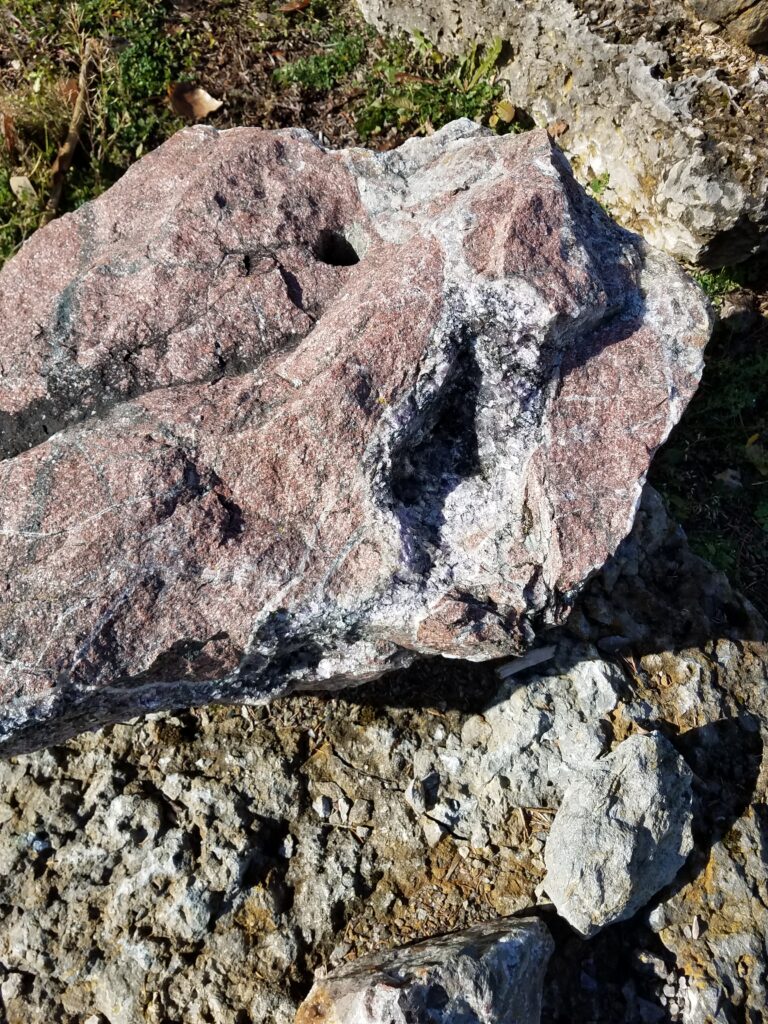
Amethyst is Ontario’s (semi-precious) ‘gemstone’, renowned for its beautiful purple crystals. It comes from a number of private quarries centered near Thunder Bay. The “amethyst belt” is about 40 x200 km long, running east to Rossport and Schreiber. This is principally a granite host rock that has traces of the very familiar quartz gemstone.
Internet details…seek: MNDM Nipigon GeoTour
GV#2
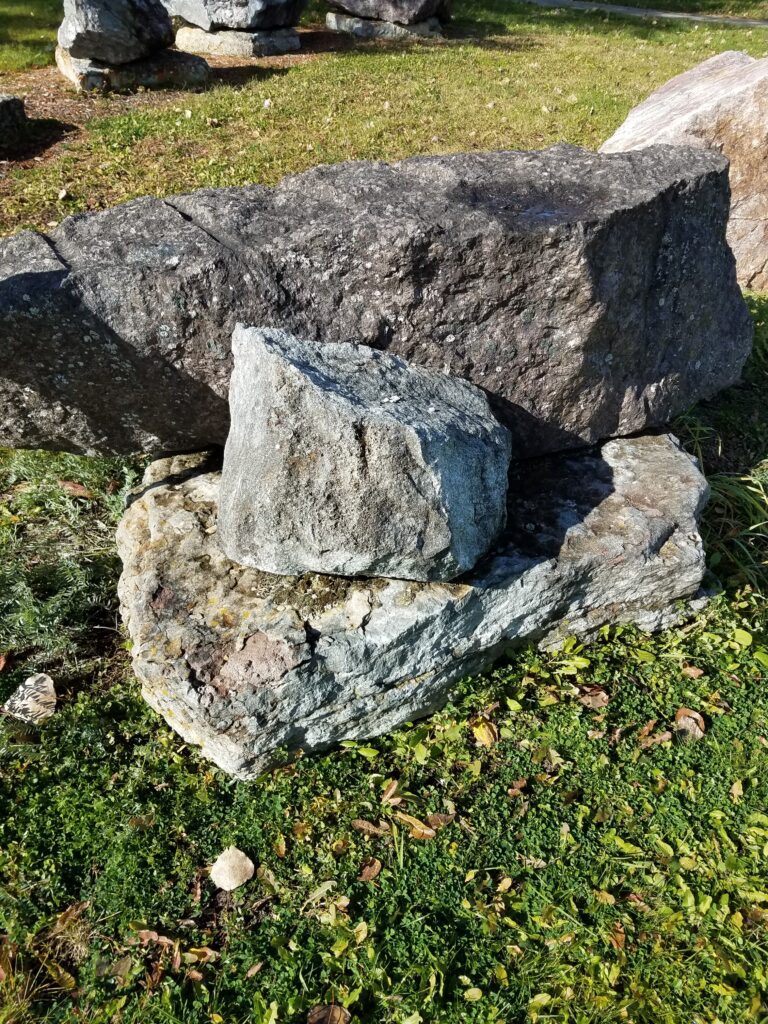
Two samples come from the former Sterling Hill zinc mine in Ogdensburg, New Jersey. The big one has large crystals that literally glow red and green when exposed to short wave ultraviolet light (at night). The smaller sample, and under short-wave ultraviolet light, shows up as bright yellow and a deep blue. In 2000, these were the largest fluorescent specimens ever shipped to Canada (in exchange for equivalent samples seen as the three stones in exhibit GV#4). Visit the Cobalt Mining Museum to see these minerals glow in their closeted viewing room.
Internet viewing…seek: Minerals of Stirling Hill Museum and Franklin
GV#3
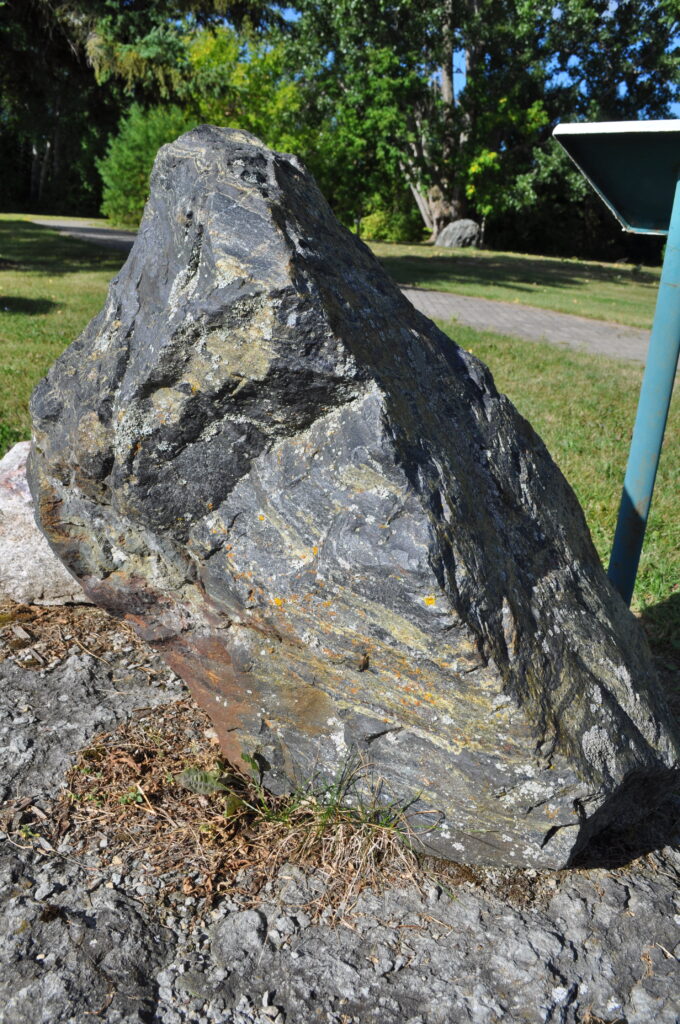
One sample shows banded iron formation from The Adams Mine, yet some of the seams contain a yellow crystalline mineral that varies in grain size, believed to be yellow garnet. Some of them are quite eye-catching.
Internet backgrounder…seek: All About Garnets – February 2013
GV#4
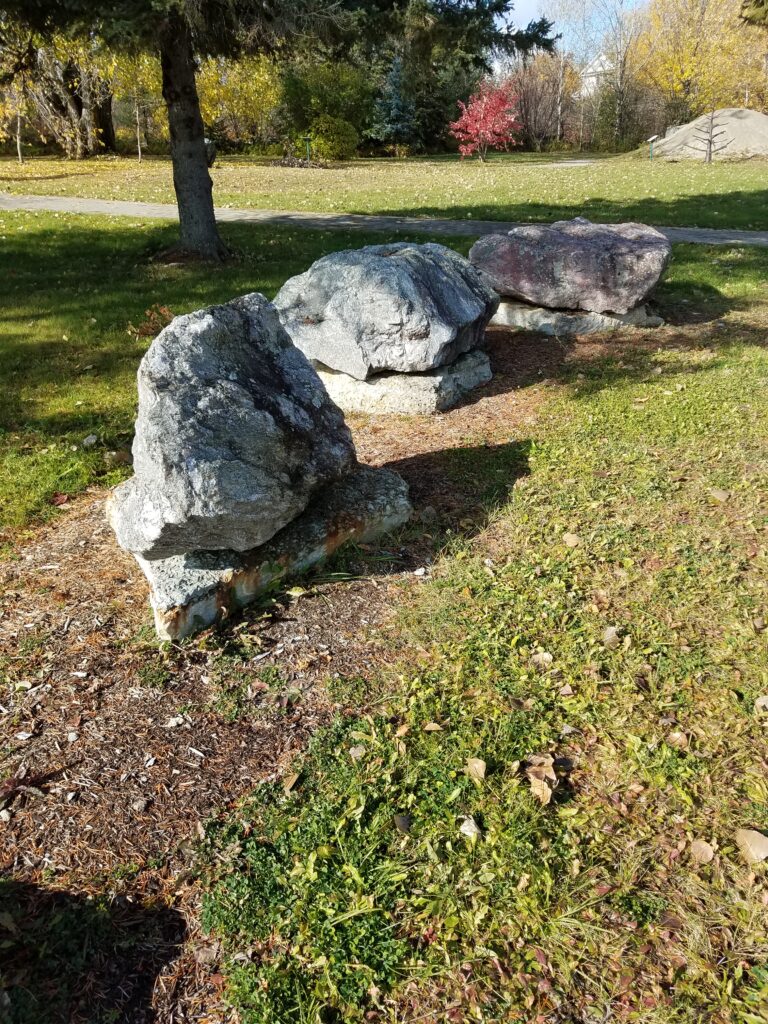
Three samples contain different shades of mica. The pink variety is lepidolite mica (lithium-bearing), whereas the green and grey varieties include lepidolite, sericite, muscovite, and possibly some phlogopite.
Internet…seek: McLarens Bay Mica Stone Quarries Ltd. MNDM
GV#5
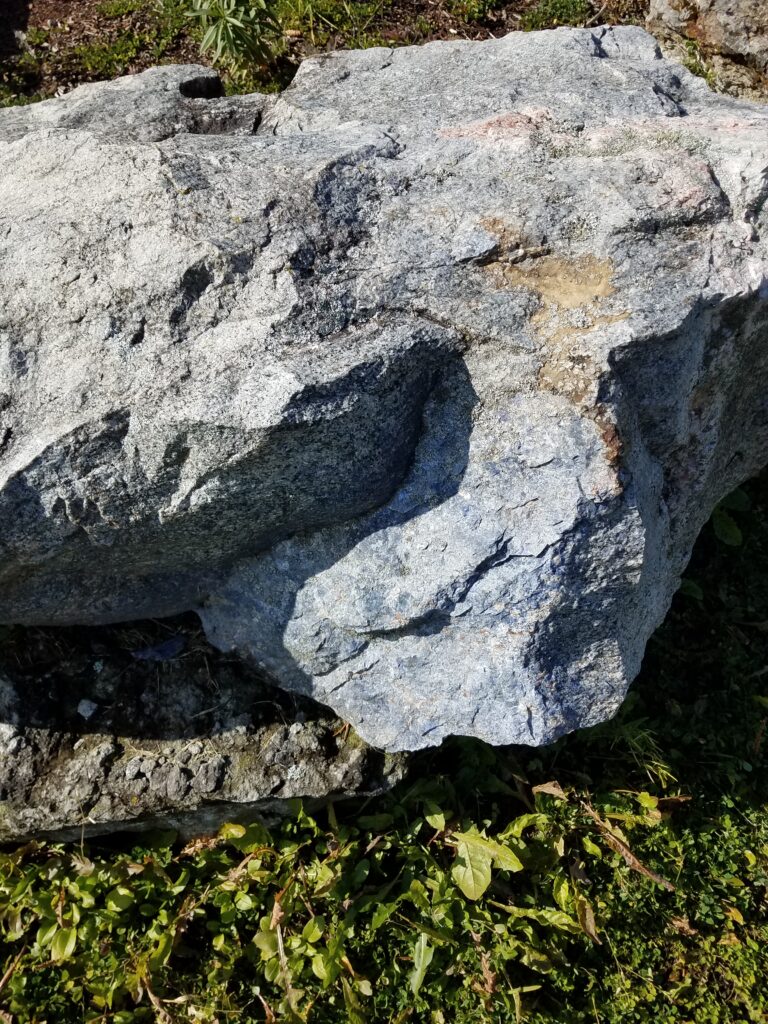
Another sample contains a blue mineral called SODALITE that was in contention for the title of Ontario’s gemstone’. This one occurs here in narrow seams that are bright blue, cutting the rock-type seen at NMO1. A ‘cousin’ of this mineral is lazurite, and when in an aggregate with pyrite, calcite, diopside and other minerals makes up the famous lapis lazuli used to adorn such artifacts as the funerary mask of ancient Egypt’s King Tut.
Internet…seek: Day Tripping to Bancroft – Ottawa Citizen 2014
GV#6
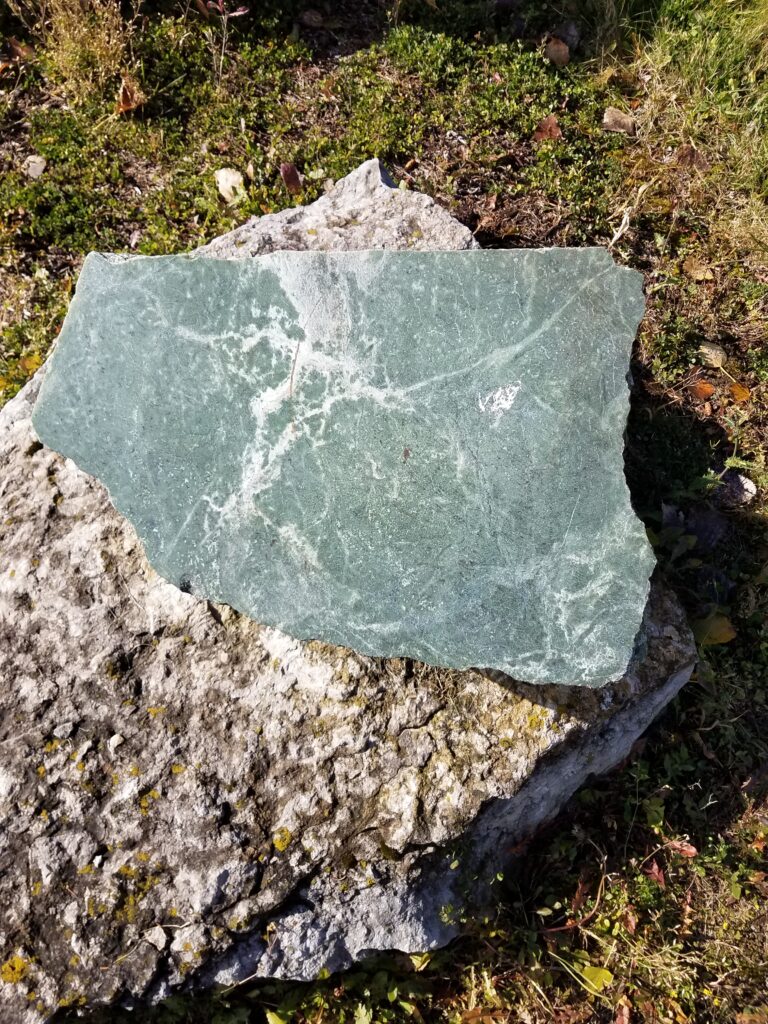
British Columbia is the source of another specimen here…JADE. It is a mystical mineral used for carving, and characterized by a lustrous green colour. Once you find this sample, inspect it closely, as you can see an alteration zone of gradation from host rock to ore – the ore portion showing a fine translucent green colour near the edges. Jade is formed in global ‘subduction zones’ where two tectonic plates collide and one is forced beneath the other. The elements that form Jade (either nephrite or Jadeite) are carried deep into the earth where heat and pressure create Jade, a process that takes about 60 million years. The jade that is mined in many locations in (northern) B.C. is usually sold to highly skilled artisans in China and Hong Kong.
Internet pictures…seek: BC Jade History – Fathom Stone Art
GV#7
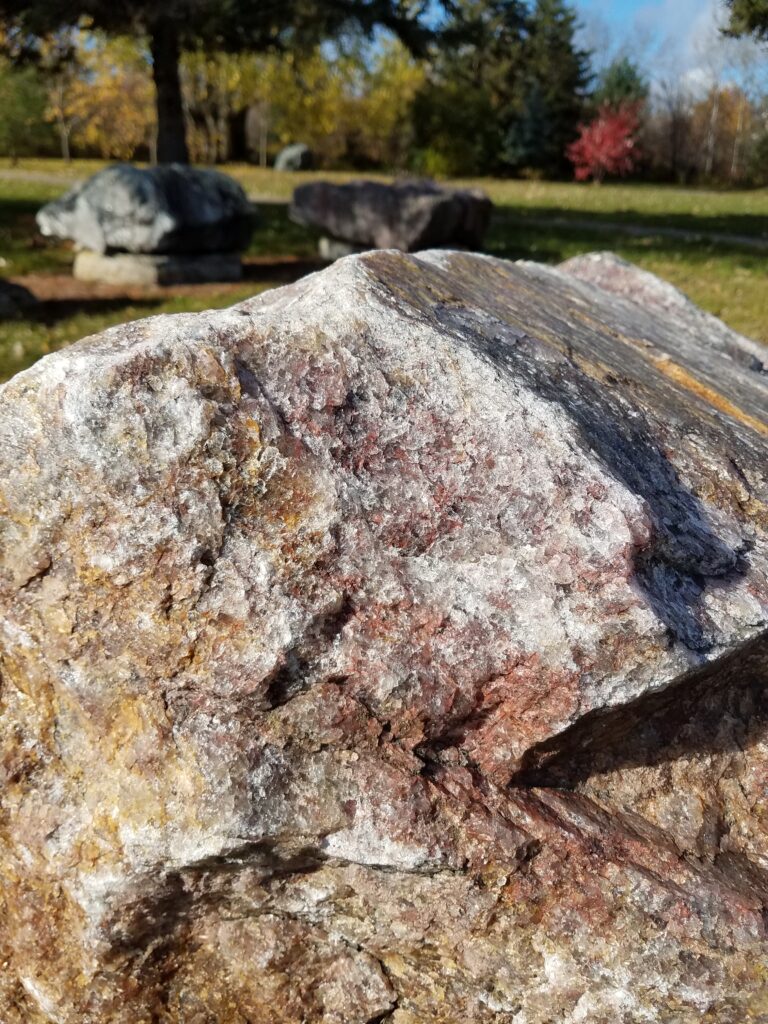
A large specimen of Rose quartz has been donated by Carman Fielding. Titanium was present as a magma cooled, so the quartz has a rose colour. It originates from the region to the south of Sudbury, Ontario
Internet Uses…seek: Quartz – Earth Sciences Museum – U. of Waterloo
GV#8
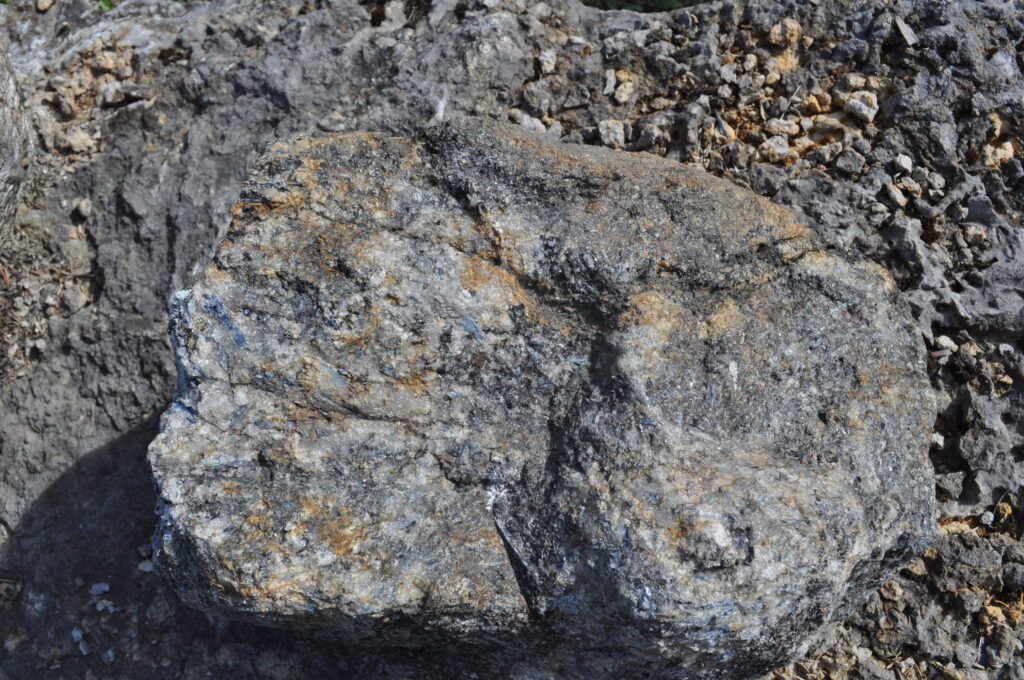
Blue crystals of kyanite are seen here in biotite gneiss and schist from the abandoned Narco (North American Refractories of Cleveland Ohio) quarry, southeast of Temiscamingue, Quebec. The deposit was opened in 1967 and a test mill was installed. There is no record of production.
Internet Photos of Narco Kyanite…seek: Kyanite from Quebec, Canada
GV#9
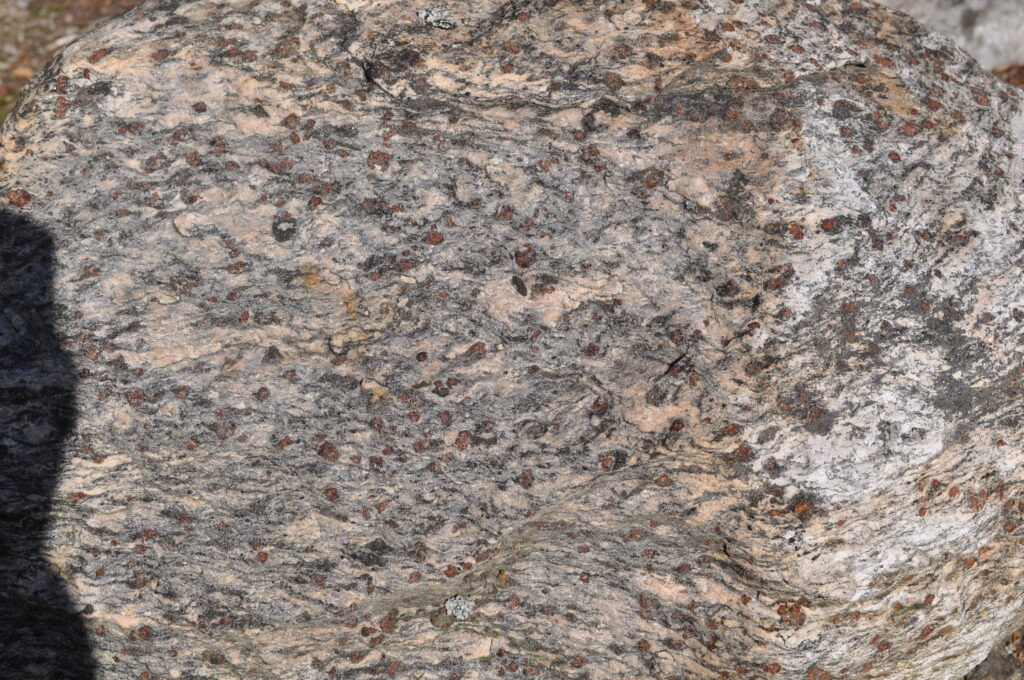
Almandine garnet is present here as various-sized and variously formed crystals in biotite schist. The sample also comes from the Narco quarry southeast of Temiscamingue, Quebec. There (was) a small pile of separated garnets at the site in 2000. Garnets are formed at great depths, subject to very high pressure and temperature, and upthrust during the Grenville Orogeny (mountain building). Two km east of the quarry is a recent (1990’s) ultramafic diamond discovery.
Internet garnet history…seek: What on Earth is Almandine Garnet?
GV#10
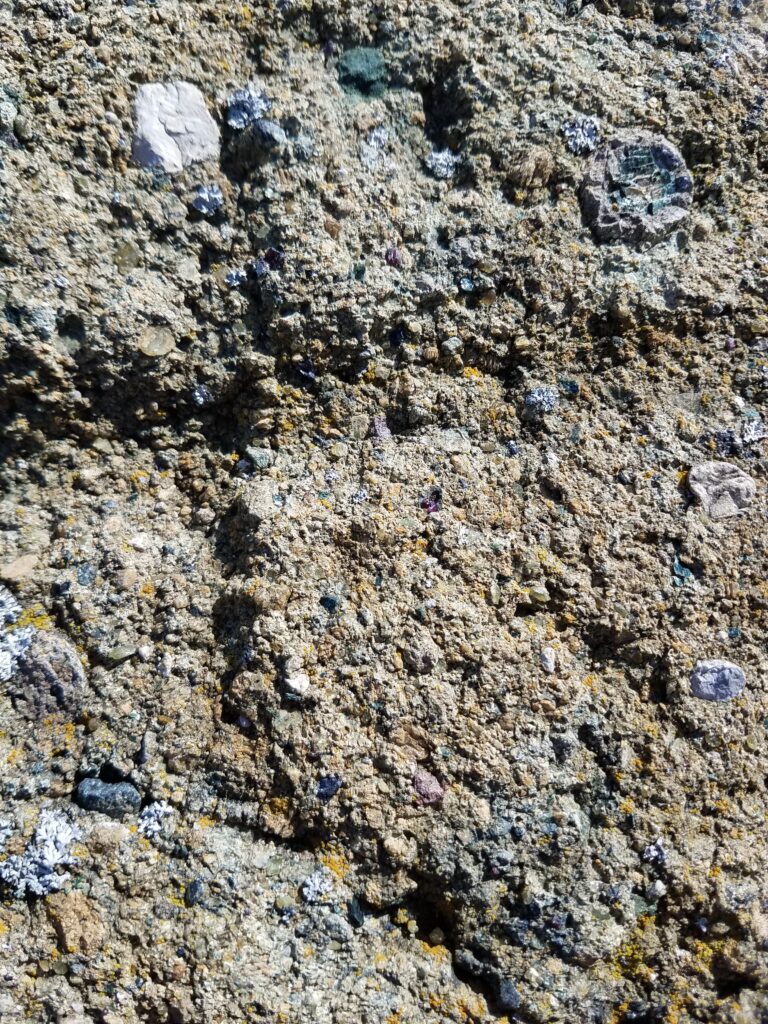
This is a sample of kimberlite, taken from the open pit Victor (diamond) Mine that was operated (2008-2019) by De Beers of Canada in the James Bay lowlands. This sample, originating near the surface, arrived in March of 2006. Although diamonds cannot be seen on the edges of this sample, it is possible that they are within the exhibit. Careful examination of the surface, even without a magnifying glass, will reveal the presence of high quality “G-9” garnets, an indicator of the presence of diamonds.
Internet connection…seek: Victor Mine – De Beers Canada
GV#11
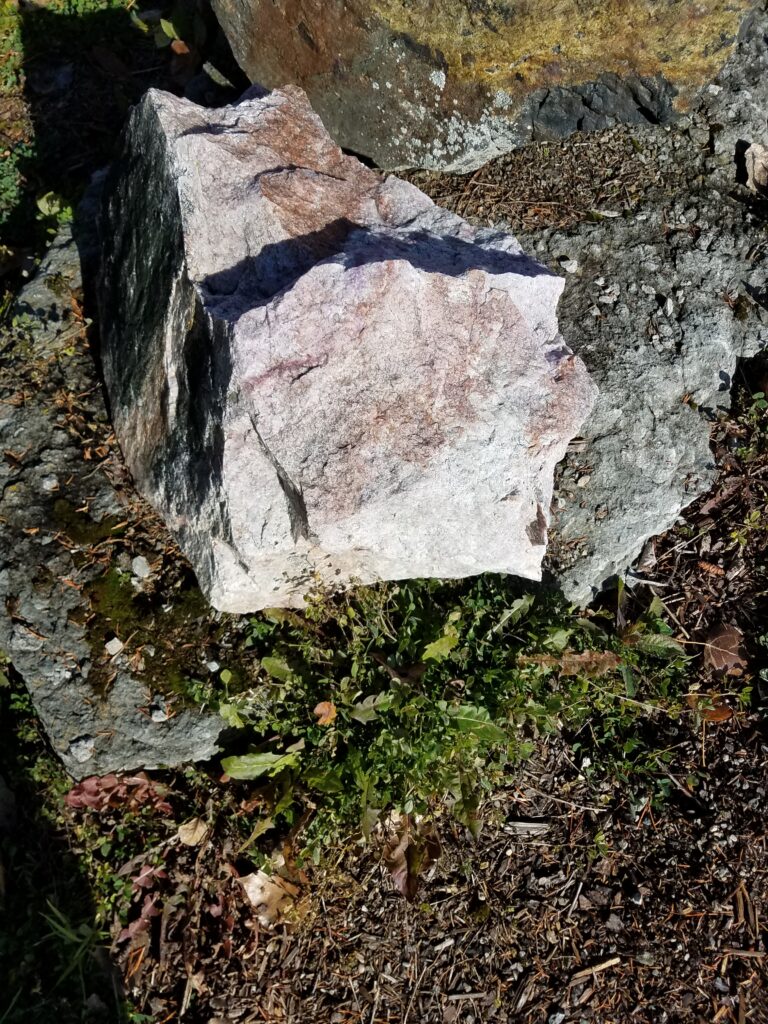
This sample of Pinnite was recovered from a roadside outcrop on the side of Hwy.#144 between Timmins and Sudbury. The pink material is a special type of alteration mineral known as Zoisite, which is a gemstone and can form crystals, and is related to green Epidote. Mineralogically, pinnite is primarily composed of sericite mica. It is suitable for tumbled jewellery.
Internet history…seek: Zoisite: Mineral information, data, and localities
GV#12
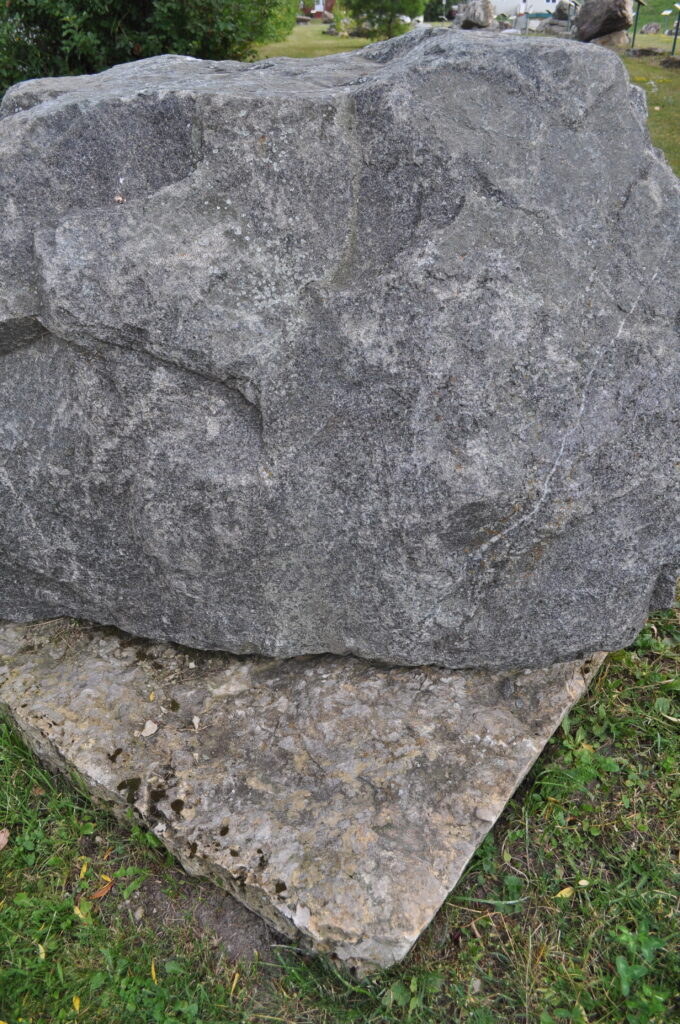
This sample is from the North ‘S’ Complex that hosts flat-lying, nested ultramafic bodies along with subordinate mafic rocks, thereby having different characteristics from the previous two samples. The average ore grade is about 3.03 ounce per ton of Palladium, used primarily in vehicle exhaust systems to reduce environmental damage from burning fossil fuel.
For 2021 internet info, seek: Northern Ontario Business: Impala Canada